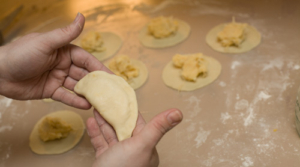 Join us on Sunday, January 27th for an immersive experience in Ukrainian culture and cuisine. We will pinch, cook and eat together as our workshop presenters share stories and songs from this rich traditional culture. Bring a rolling pin and a tray!
Join us on Sunday, January 27th for an immersive experience in Ukrainian culture and cuisine. We will pinch, cook and eat together as our workshop presenters share stories and songs from this rich traditional culture. Bring a rolling pin and a tray!
“While pyrohy were a regular part of meals in our household, they were especially important during festive events like weddings, church functions or Christmas. On Ukrainian Christmas Eve (Svyata Vechera) pyrohy were made with homemade cottage cheese, sauerkraut, potato and prune fillings as part of the twelve traditional meatless dishes. The prune filling was especially memorable to me as a child as it was made only during Christmas and it was like having a dessert during the main part of the meal. Sour cream and a sauce made from high bush cranberries (kalyna) were used as a dressing.” -Ed Andrusiak, Galiano resident, Ukrainian- Canadian
“To me, pyrohy are the ultimate comfort food from my childhood. They evoke memories of my grandmother, mother and all my female relatives in somebody’s big kitchen, laughing, singing, talking and arguing while peeling potatoes, grating cheese, chopping onions, mushrooms and sauerkraut, and making and rolling out paper-thin dough. Then we would put potato and cottage cheese or sauerkraut and mushroom filling, my two favourites, gently into each circle and finally fold and lovingly pinch it closed before plopping them—one by one—into huge pots of boiling salted water. Dining on a plateful of these precious, delicious dumplings, sliding around in butter and sour cream, is heaven on earth. – Christina Stechishin, Galiano resident and great-niece of Savella Stechishin, author of Traditional Ukrainian Cookery
I grew up eating pierogies and they are deep in my Polish soul. I love to eat them but I also really enjoy the way people gather to make them. Spreading flour on a kitchen table, making the dough, preparing filling and
boiling the water in a big pot. Everyone got their hands dirty to create a mythical half-moon shape stuffed with their favorite filling. After a few minutes in boiling water, the pierogies would land on our plates and the feast began. We shared the work together and we also shared stories about our best pierogi recipes. We reminisced about people in our lives and all the moments spent with our family and friends preparing pierogies to celebrate the beauty of life. -Konrad Dwornik, Galiano resident, born in Poland
“It was my favourite food as a child. I grew up being part of the assembly line. There would be at least three generations at the table pinching the pyrohy, cousins, aunties, grandmas, and kids. The matriarchs always bragged about how many they made. You don’t just make a few!” -Beverly Dobrinsky, founder of Zeellia, Slavic Soul and director of Barvinok Ukrainian Choir
“Homemade perogies remind me of my aunt Beverly’s kitchen, her Christmas Eve dinner and her way of bringing Ukrainian music and food together. I’ve always stuffed them too big and I still do. Before dinner, I would pester my aunt to find out how many dozen we had made this year as my mom nudged me to leave my busy, flour-dusted aunt alone. As kids, my brother, cousins and I would compete over who could eat the most. I was so greedy and just wanted to stuff as much as I could into this one magical night of the year. Maybe that’s why I love to make and share perogies now.” -Brahmi Benner, Galiano resident
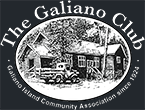
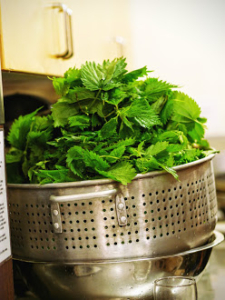 Whenever I’m explaining the Food Program to new people (both on island and off), I always mention Nettlefest because it’s a Galiano celebration that both mystifies and inspires!
Whenever I’m explaining the Food Program to new people (both on island and off), I always mention Nettlefest because it’s a Galiano celebration that both mystifies and inspires!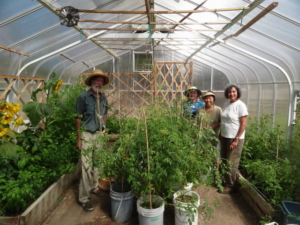 Located behind the Galiano Library on the School grounds, the Greenhouse Growing Group grows vegetables together in the Community Greenhouse. Anyone is welcome to join. The charge is only $20 for the whole year. This fee includes all soil amendments, seeds, pots, and tools, but people are still encouraged to bring their own. Participants share the produce.
Located behind the Galiano Library on the School grounds, the Greenhouse Growing Group grows vegetables together in the Community Greenhouse. Anyone is welcome to join. The charge is only $20 for the whole year. This fee includes all soil amendments, seeds, pots, and tools, but people are still encouraged to bring their own. Participants share the produce. Join us on Sunday, January 27th for an immersive experience in Ukrainian culture and cuisine. We will pinch, cook and eat together as our workshop presenters share stories and songs from this rich traditional culture. Bring a rolling pin and a tray!
Join us on Sunday, January 27th for an immersive experience in Ukrainian culture and cuisine. We will pinch, cook and eat together as our workshop presenters share stories and songs from this rich traditional culture. Bring a rolling pin and a tray! 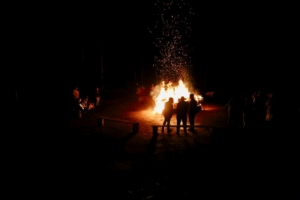 I was working in the kitchen at the South Hall, with a small group of volunteers, baking the bread for the Solstice dinner when the storm started on Dec 20th. The power went out, and after 30 minutes, we decided to start the generators. A grant to upgrade the Hall’s electrical system had allowed us to get the generators wired in properly, but I’d never used them before. It took a little while. We had to call for help, but we got them going, and (hallelujiah) kitchen lights, stoves and freezers were all working. We’d discovered the gas cans next to the gennies were empty, so one volunteer left to fill them, but the tree that came down at Murchison Cove stopped her getting back to the hall that night.
I was working in the kitchen at the South Hall, with a small group of volunteers, baking the bread for the Solstice dinner when the storm started on Dec 20th. The power went out, and after 30 minutes, we decided to start the generators. A grant to upgrade the Hall’s electrical system had allowed us to get the generators wired in properly, but I’d never used them before. It took a little while. We had to call for help, but we got them going, and (hallelujiah) kitchen lights, stoves and freezers were all working. We’d discovered the gas cans next to the gennies were empty, so one volunteer left to fill them, but the tree that came down at Murchison Cove stopped her getting back to the hall that night.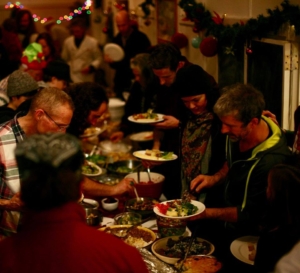 It’s traditional on the Winter Solstice, the longest night of the year, to stay awake all night, keeping a bonfire burning, in an effort to call the sun back. We have a bonfire on Solstice too, but our celebration is all about gathering with your friends and neighbours, sharing some wonderful food, watching the kids arriving at the hall in a torchlit parade, chatting around the fire, and enjoying the entertainment of talented locals. The Solstice is all about creating the magic of community.
It’s traditional on the Winter Solstice, the longest night of the year, to stay awake all night, keeping a bonfire burning, in an effort to call the sun back. We have a bonfire on Solstice too, but our celebration is all about gathering with your friends and neighbours, sharing some wonderful food, watching the kids arriving at the hall in a torchlit parade, chatting around the fire, and enjoying the entertainment of talented locals. The Solstice is all about creating the magic of community.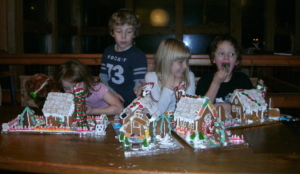
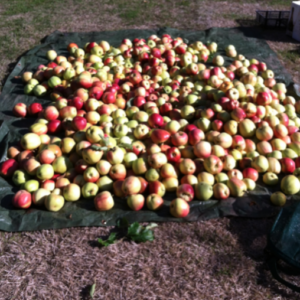 All over the island this season, people have been remarking about the incredible bounty of fruit we had this year. What a bumper crop! It’s meant a seriously fruitful season of the Gleaning Project. Once again, I’ve been amazed at the generosity of this community, and at how lucky we are to share this fertile place that has been so well stewarded. Many of the trees we pick are over 100 years old!
All over the island this season, people have been remarking about the incredible bounty of fruit we had this year. What a bumper crop! It’s meant a seriously fruitful season of the Gleaning Project. Once again, I’ve been amazed at the generosity of this community, and at how lucky we are to share this fertile place that has been so well stewarded. Many of the trees we pick are over 100 years old!